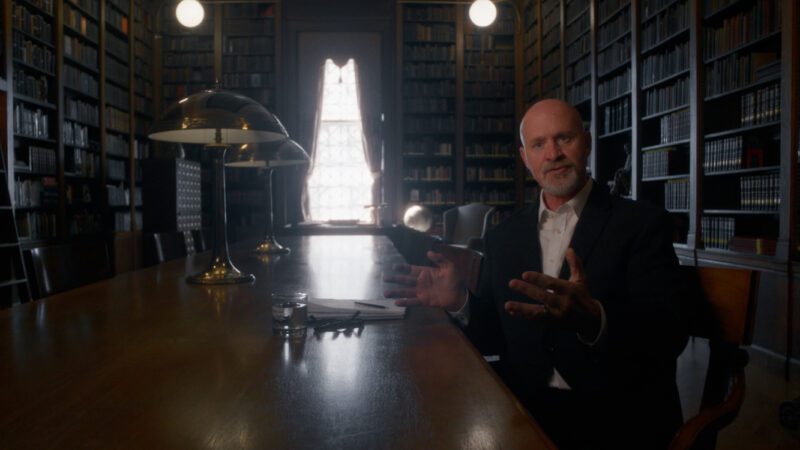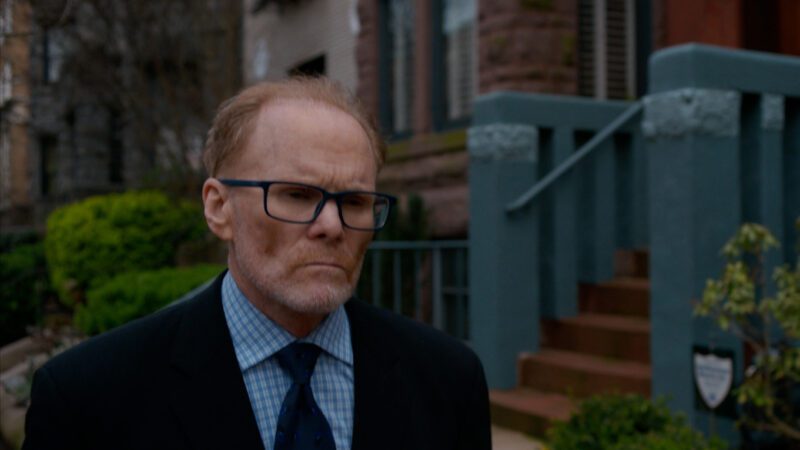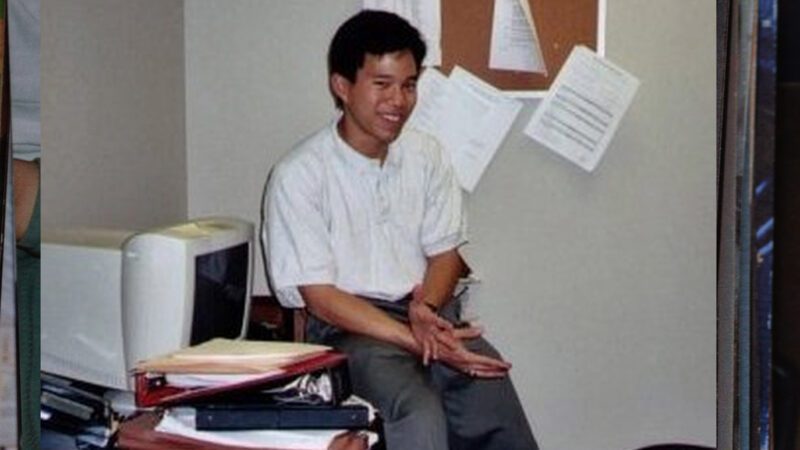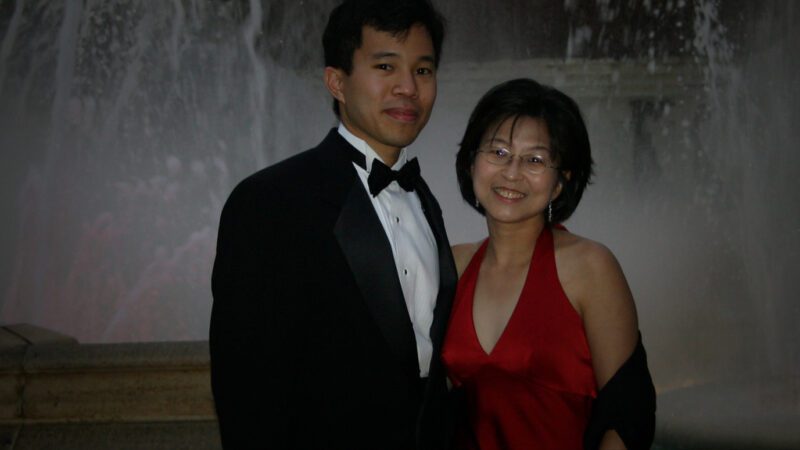The story of one of the most bizarre and baffling murder cases will be premiering as a two-part docuseries on Peacock from director/producer Jared P. Scott (Age of Consequences 2016). The murder of prominent D.C. attorney Robert Wone occurred in 2006, and still remains an open cold case 16 years later. I had not heard of it until receiving the opportunity to interview Jared. And I must say, as an avid documentary viewer and true crime follower, the case of Robert Wone has me deeply shaken.
Sypnosis
On the night of August 2, 2006, Victor Zaborsky calls 911 to report an intruder stabbing a friend at the D.C. home he shares with Joe Price and Dylan Ward. First responders arrive to find attorney Robert Wone already dead in the guest room. With little blood at the scene and no signs of struggle or robbery, suspicions heighten after police interview the three housemates. Believing the men know more than they are revealing, the investigation soon uncovers more questions than answers.
Unthinkable twists and turns surface, leaving friends questioning how well they knew the three men and police struggling to nail down answers. Ultimately, prosecutors bring an unusual set of charges against the three residents — but not for murder. As Price, Zaborsky and Ward maintain their innocence and fight to clear their names, those close to Robert seek the truth and try to heal from unimaginable loss.
Ahead of the series’ release, I had a moment with Jared P. Scott to discuss his interest in the case, and to gain a little insight into how he delivered facts and details of such a horrific event while presenting it in a way that not only introduces audiences to the case but hopefully helps get justice for Robert.
Jared P. Scott: Hey Tiffany, how are you?
PopHorror: Hi Jared!
Jared P. Scott: Thank you for taking the time to talk with us and to write about this and getting this out to your audience.
PopHorror: Absolutely! And I appreciate you guys giving me this opportunity. I was really excited when I saw it come up because I’m – I wanted to be like Clarice Starling when I was a kid, so I have this fascination with true crime. And I’m curious, what drew you to this particular project – or this case?
Jared P. Scott: It’s a fascinating story. It’s a bewildering story, it’s a maddening story. It’s a story that when we had the access to those closest to the case to be on board to tell it, it felt irresistible to want to jump in and create a cinematic, kind of definitive telling of this case. You know, I’m not– I wouldn’t consider myself a true crime kind of buff or anything, but I just like good stories. When I first heard about this, I thought it was a great story and you know – it’s twofold. I knew we could create a compelling, cinematic show, and I knew that we could advocate on Robert’s behalf.
PopHorror: Right.
Jared P. Scott: You know? So, I think you’re trying to entertain, but you’re also seeking justice.

Jared P. Scott: And I think it’s that kind of balancing act that we have to do in this true crime genre. That’s our responsibility as storytellers. ‘Okay, this is perplexing, it is stranger than fiction.’ But it’s also horrible, and it’s awful and it’s chilling– Something happened to a real person, that was taken in the prime of his life. You know, a 32-year-old lawyer– prominent lawyer. A promising young man. By all accounts, well-liked, loved, revered. He just somehow, in this bizarre kind of string of circumstances, ends up being stabbed at a friend’s house.
PopHorror: Right.
Jared P. Scott: This is not like you end up at the wrong place at the wrong time on the edge of town or something. This was, you went to a friend’s house and 79 minutes later one of your friends is calling 9-1-1 saying Robert had been stabbed. Right? And I think from that set-up, of just, wait so he went to stay at his friend’s house, and then detectives arrive, and they’re all in white robes? The 3 guys? I mean right there it kind of– it’s a captivating hook into the story. I think audiences love murder mysteries. I think for me it was this– and I kinda keep mentioning this, there was this impossible puzzle, that was the case itself. What happened itself– because we’ll never know what happened in that 79 minutes. And there’s also– storytelling is a way of putting a puzzle together. We’re trying to put things in the right order, we’re trying to organize information and insights, provide context and POV. We’re trying to create– trying to use this primary source material from the affidavit texts to crime scene photos to archival. We’re weaving all that together to try to create our own mosaic– our own story, kind of puzzled story.

PopHorror: Right.
Jared P. Scott: And I love how those two things kind of overlap and interweave.
PopHorror: Which I did want to say, one of the things I really appreciated– when I say I’m a ‘true crime junkie’, I know there’s a lot of different people that follow these types of– different genres, even when you think of horror films and stuff like that. It’s like different people like it for different things. And I’m definitely– I am not– whenever something is really sensationalized, really gory, things like that. I can’t– I’m more interested in learning about these incidences– these cases I’ve never heard about before. And I appreciate when awareness is brought and you kinda know what’s going on and what’s happened. And that’s one of the things I really admired– there seemed to be balance with this [series]. And when you’re looking at true crime, if it’s not that [sensationlization], then it’s somebody– the filmmakers have their own bias that they’re saying ‘we believe this is what happened’ and that’s what they’re trying to get you to see as well.
Jared P. Scott: Sure sure.
PopHorror: The information was presented very evenly and balanced. So it’s like ‘here are the facts, here are the people that were involved with the case. You draw your own conclusions. Or just be aware that this is something that happened.’
Jared P. Scott: And I appreciate you mentioning that because it was important for us. And of course, we’re all victims of our own bias and we had to all constantly check that bias. We had a great team– filmmaking is a team sport. And we’re not trying to editorialize things too much. This was a unique case where there are so many things that were just salacious on their own– or are provocative on their own, or perplexing, or madding on their own. We don’t need to do anything. You don’t need to add hyperbole. You don’t need to editorialize, we don’t need to skew the audience one way or the other. Because it’s just this kind of, there’re just so many circumstantial curiosities in this piece that it’s all there to be chewed on by whoever’s watching. The detectives had to chew on it– the audience needs to chew on it. It’s not like there’s a bunch of this direct evidence and we’re trying to direct people towards one way or the other.
PopHorror: Right.
Jared P. Scott: People have to look at all these things and go ‘what’s important and what isn’t?’. Oftentimes our job is to raise the questions, or almost to ask the questions that the audience wants to ask, as opposed to answer them. Because as I said in the beginning about this call when Robert [Wone] arrived, all of this took place in 79 minutes.
PopHorror: Yeah.
Jared P. Scott: You know? And the only people that know what happened in that timeframe are the 3 friends– later suspects, later defendants who have only really told us their story that one night in those interrogations. They’ve never spoken out since. The other person who could tell us what happened was Robert and he was brutally murdered. So we just don’t know. We just don’t know what happened. And so I just think that it’s not my responsibility to tell people what I think happened.
PopHorror: Right.
Jared P. Scott: Because it’s just pure speculation. My responsibility as a storyteller is to try to show the facts of the case as best we know them. Through firsthand– well, you there’s really not eyewitness testimony, it’s kind of like earwitness testimony with the neighbor.
PopHorror: Right.
Jared P. Scott: But just with the first responders, the detectives, those who were on the case. Those who were on first, those who were on the longest. We just don’t know, it’s all speculation. So I think we have the responsibility to be rooted in facts. And to show that ‘point-counterpoint’. Because you have to look at the criminal justice system as a whole. Whether we think it functions or not.
PopHorror: Mmm-hmm.
Jared P. Scott: There’s the prosecution’s side and the defense’s side. And also we kind of go from this ‘the night of’ and how the investigators experienced the crime, culminating into this kind of– this trial, there’s a bit of law and order there. And I think that’s important for the audience to think about. Because as convincing as some of the things on one side– you know the other side can poke holes and say ‘well what about this?’ And then say, ‘Well yeah, what about that?’
PopHorror: Right.
Jared P. Scott: At the end of the day, the finder of fact is going to look at ‘is there truth beyond a reasonable doubt?’ And there’s so much reasonable doubt in this.
PopHorror: Absolutely!
Jared P. Scott: And the thing about naming names, just think about the math problem… as the judge calls it. You know you have 3 people. And normally, maybe in a lot of cases, you separate people and because of what we know about the prisoner’s dilemma, what we know about gang theory. Is someone talks. Right?
PopHorror: Right.
Jared P. Scott: It’s usually in their interest to talk. Now, again, I’m not saying they’re lying or not telling the truth, but everyone said the same thing.
PopHorror: Yeah.
Jared P. Scott: So if they’re all saying the same thing– no one’s turning on each other. If that’s even a possibility. If there was anything to turn on each other about.
PopHorror: Right.
Jared P. Scott:: Let’s say, for some reason they were hiding something, it might be pretty safe to say there’s more that’s not being said.
PopHorror: Yeah.
Jared P. Scott: Was it one of them? Was it two of them? Okay, well which two? Was it all three of them? I mean, that’s a problem right there. What the judge again called the ‘math problem’.

PopHorror: Absolutely.
Jared P. Scott: And you can’t– so there’s reasonable doubt just in the math equation there. But of course, throughout the whole piece, I think it’s why it’s so perplexing and why I think when people hear about this for the first time they go ‘why didn’t I know about this?’
PopHorror: Yeah!
Jared P. Scott: The thing that keeps churning in your mind after you experience it or learn about it or watch the show because there are so many things to kind of reconsider. You think you might get inside the 5-yard line, and something happens in your back 50. Or you go down a path and you think you’re 95% there and you hit a brick wall and you have to find yourself again in that labyrinth. The more you learn, it’s like the less you know in this case. I also want to say, I know we talk a lot about the riveting aspects of this case, and how it draws everybody in, and how you want to solve the puzzle– I just want to always stress this, because it’s important for me– it was important for me to remember when making this, telling the story, you have to remember that there’s a real person who lost their life tragically that night.
PopHorror: Right.
Jared P. Scott: All of this puzzling, it’s not something that’s just entertainment. The idea is that we are trying to shed light on this story, on this case. And to try and use this show as an impetus to bring justice to Robert.
PopHorror: Absolutely.
Jared P. Scott: And maybe, if this gets injected into the bloodstream of the current moment, that somebody out there might catch wind of it. And maybe they heard something, maybe they saw something. Maybe somebody’s always heard something– always heard or seen something and just hadn’t spoken out. And maybe now, sixteen years later they have the courage to do so for whatever reason.
PopHorror: Right.
Jared P. Scott: Something might happen where maybe one clue, one tip, might help– might emerge. Anything. We have to remember, this is still an open murder case. Nobody was ever tried for murder. And that case is still looming. As Glenn Kirschner says on our show, this is his white whale, this is the one that got away. And at the end, as he states, as our friend Paul Wagner kind of narrates, there is no statute of limitations in the District of Columbia. Something happens, this is live again. It’s a cold case, but cold cases are re-opened all the time. Not as much as they should be. Right?
PopHorror: Right.
Jared P. Scott: But the idea is that this still can– we still can hopefully find justice for Robert. And we hope that the show does that.
PopHorror: And that’s actually a great pivot point for me to ask my next question. Since this is set up as a series, is there a process for a follow-up? As far as if there is anything– is there a timeline for [you all] if there’s a break in the case, that you would follow to be able to bring anything as far as updates on it? How does that tend to work? Or what is that going to look like for you guys?
Jared P. Scott: You know, I’m not there yet mentally. If there was a reason to make a new show, my hope is that that reason would be because we finally figured out what happened that night and that justice has been served. Right?
PopHorror: Right.
Jared P. Scott: That somehow there’s been a reckoning, and somehow there’s been some sort of resolution for Robert’s friends and family. But yeah of course, if there is something else that happens, yeah, we would definitely want to tell another chapter of this story. Because there are several chapters that remain unwritten– remain unknown. If some light was shed on this case, we would definitely make a follow-up.
PopHorror: Okay. And I’m familiar with your work the more social activism docs, especially The Age of Consequences, I really dug that one.
Jared P. Scott: Oh thank you!

PopHorror: What’s next for you? With your work. Do you have anything in mind, or is it kind of time to take a breather? [Chuckles]
Jared P. Scott: [Laughs] I always have a lot of things on my slate, you know, proverbial slate. And usually it’s a mixture of momentum, of financing, and of timing where– and of access, where we start the next one.
PopHorror: Right.
Jared P. Scott: I already have a lot of irons on the fire right now. I’m not exactly prepared to share what’s next, but there will be something soon for sure. I think that’s why I love the aspect of– the theme of justice and injustice in my work, that throughline is really important to me.
PopHorror: Mmm-mm.
Jared P. Scott: The reason why we make these things is because it’s nice to try to either expose injustice and advocate for justice. And have something that becomes a platform for something larger. And I think that in this case, there is a way we can advocate for Robert’s behalf and tell a great story at the same time.
PopHorror: Yeah, absolutely. Well, I definitely appreciate you guys taking the time and setting this up, and thank you so much Jared for sharing some of the insights on this and I look forward to whatever you have coming next.
Who Killed Robert Wone? Starts streaming on Peacock March 7th. And to view The Age of Consequences or any of Jared P. Scott’s other documentaries, many can be found on Tubi, Pluto TV, and the Roku Channel.
 PopHorror Let's Get Scared
PopHorror Let's Get Scared




